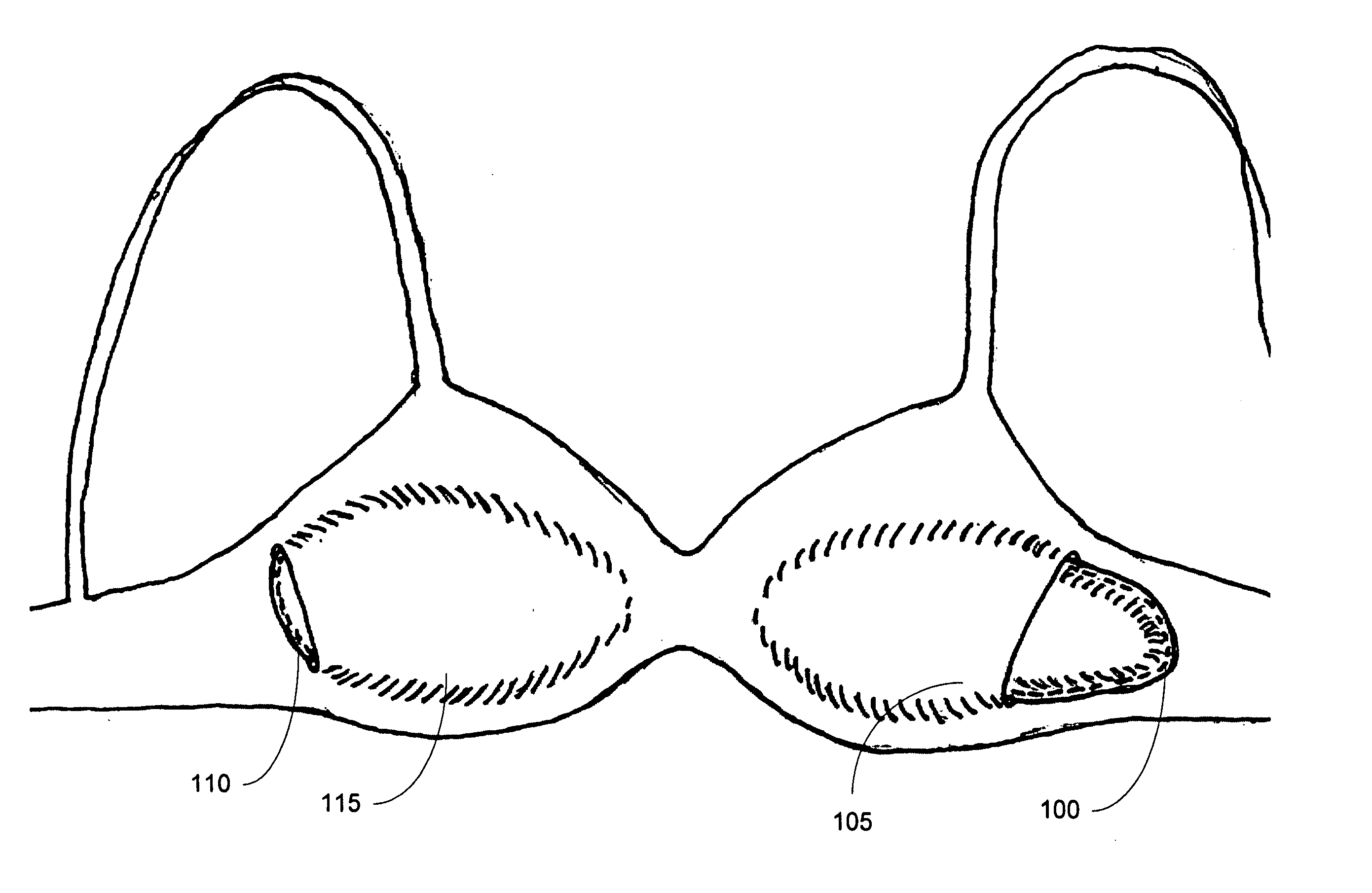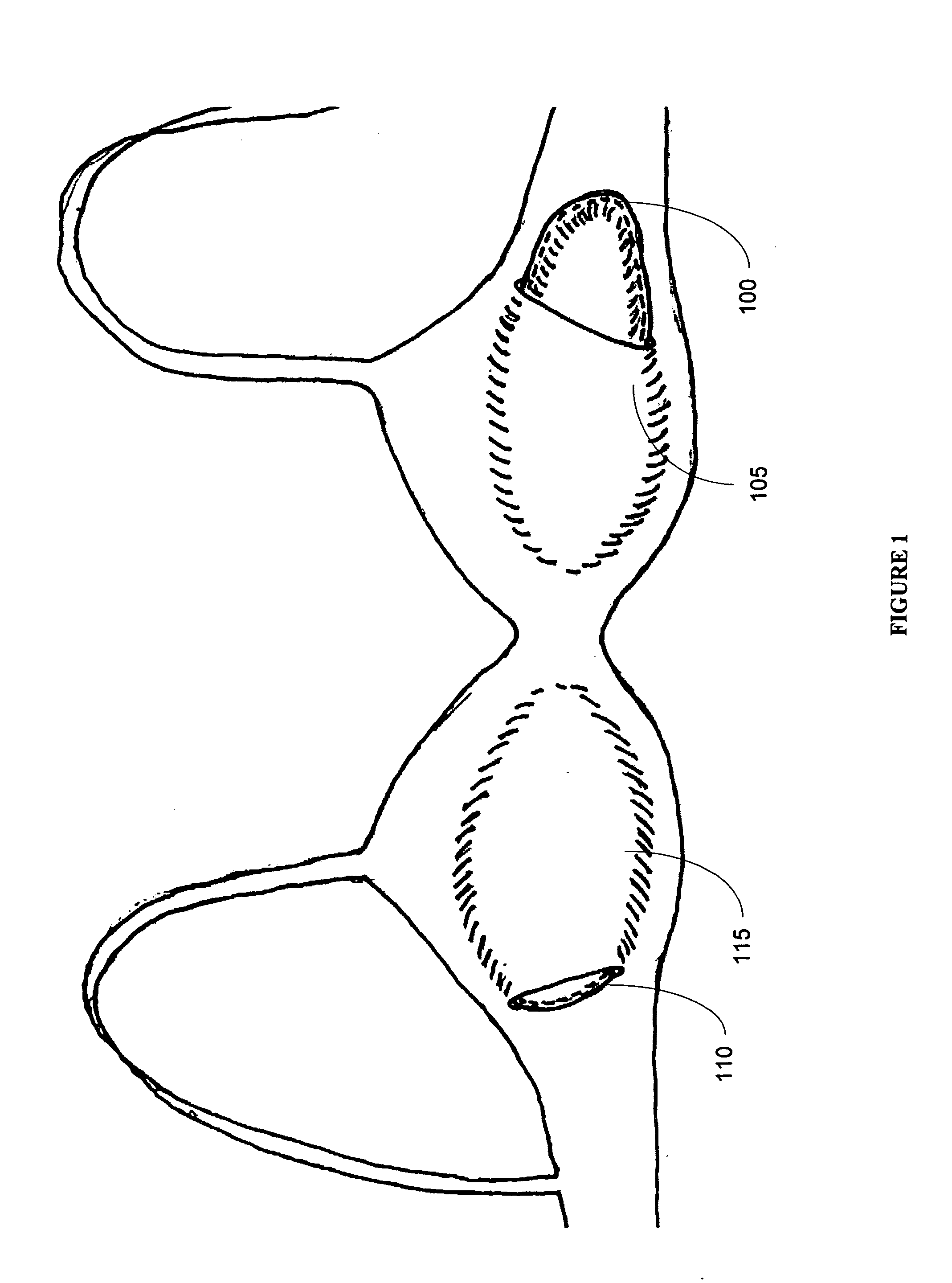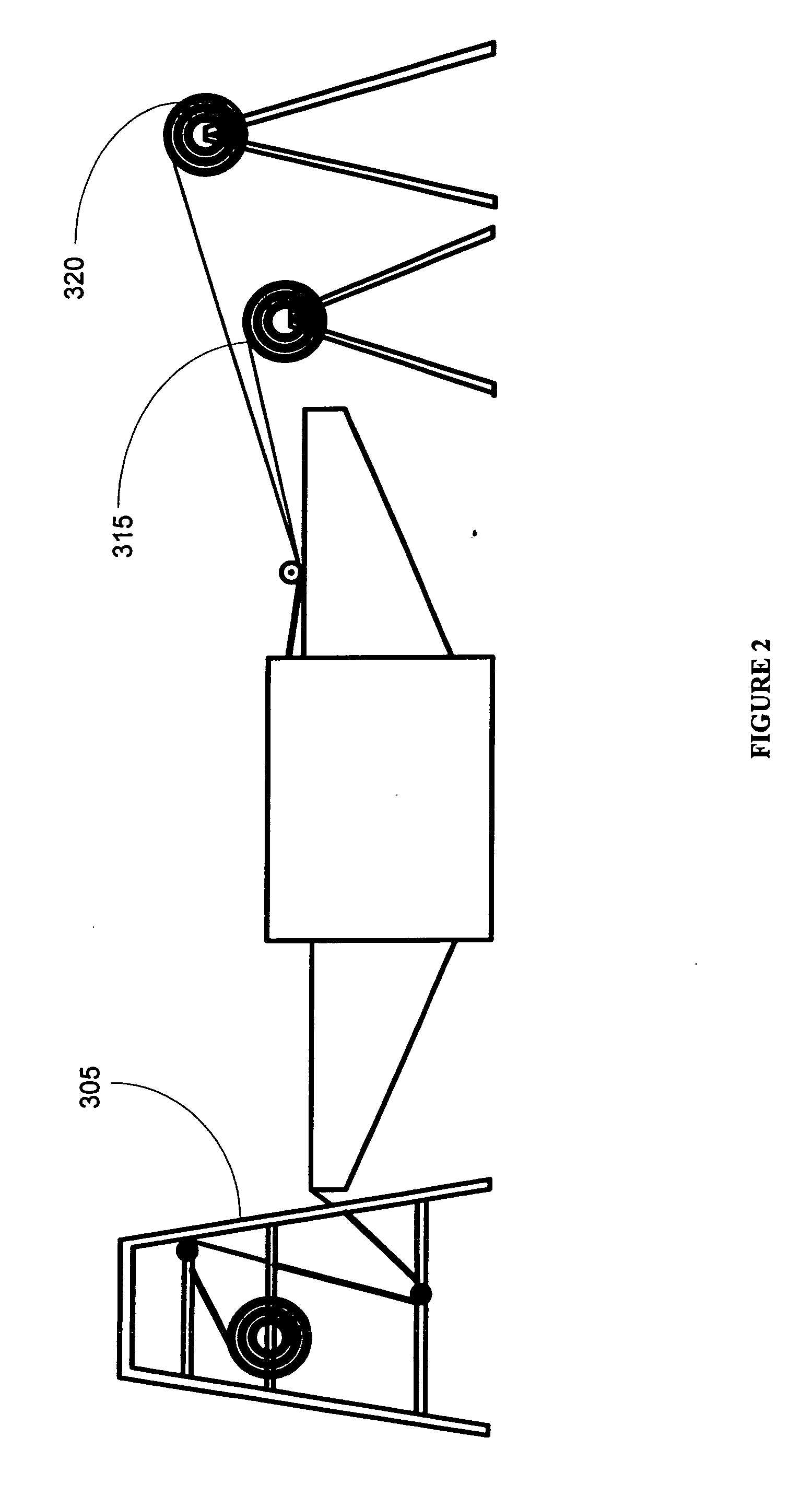System and method for not-sew manufacturing
a manufacturing system and not-sew technology, applied in the field of garment manufacturing, can solve the problems of limiting the manufacturing speed and overall efficiency of such a laminate and the resultant undergarments, brassieres presenting additional manufacturing challenges, and irritation to the skin of wearers, so as to achieve greater aesthetic appeal, greater comfort, and pleasing appearance
- Summary
- Abstract
- Description
- Claims
- Application Information
AI Technical Summary
Benefits of technology
Problems solved by technology
Method used
Image
Examples
Embodiment Construction
[0030] Lamination based manufacturing of garments although known in the art, is not as widely used as might be expected in view of the labor intensive nature of standard sewing techniques. One of the reasons is that the nature of the known adhesives was not suitable to provide long-lasting comfortable garments. Plastic does not allow for ready exchange of gases resulting in excessive buildup of moisture, odors and provides a less than desirable feel for the wearer. Other adhesives are susceptible to hydrolysis, particularly in undergarments, upon exposure to sweat, and other bodily fluids. Applicants have also determined that adhesives in the form of films are preferable to adhesives in the form of webs for laminating fabrics together. This is due to, in part, the improved consistency in adhesion following lamination made possible by films.
[0031] On the other hand, lamination makes possible easy construction of reinforced garments such that the reinforcement is in areas in need of ...
PUM
| Property | Measurement | Unit |
|---|---|---|
| thickness | aaaaa | aaaaa |
| thickness | aaaaa | aaaaa |
| thickness | aaaaa | aaaaa |
Abstract
Description
Claims
Application Information
 Login to View More
Login to View More - R&D
- Intellectual Property
- Life Sciences
- Materials
- Tech Scout
- Unparalleled Data Quality
- Higher Quality Content
- 60% Fewer Hallucinations
Browse by: Latest US Patents, China's latest patents, Technical Efficacy Thesaurus, Application Domain, Technology Topic, Popular Technical Reports.
© 2025 PatSnap. All rights reserved.Legal|Privacy policy|Modern Slavery Act Transparency Statement|Sitemap|About US| Contact US: help@patsnap.com



